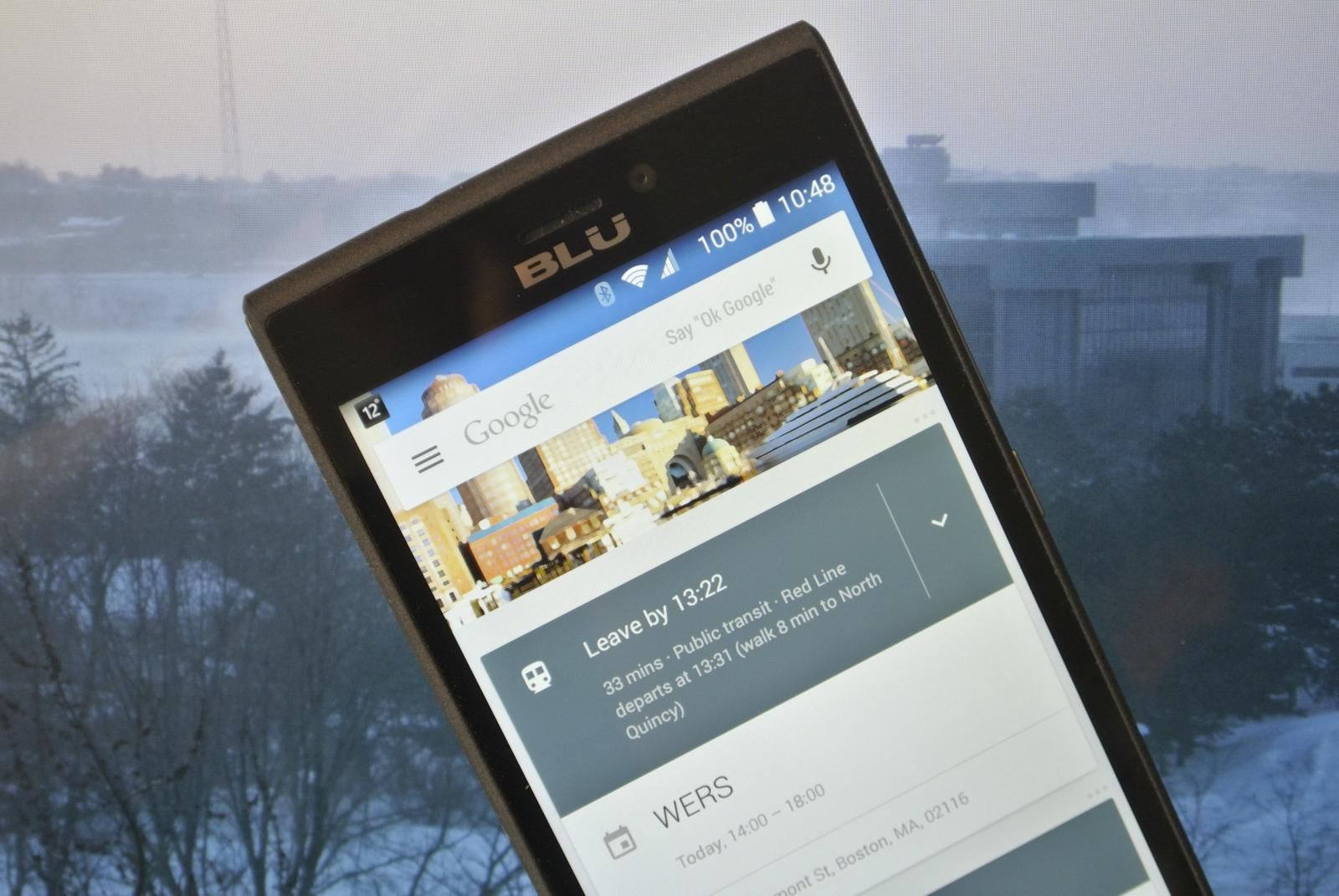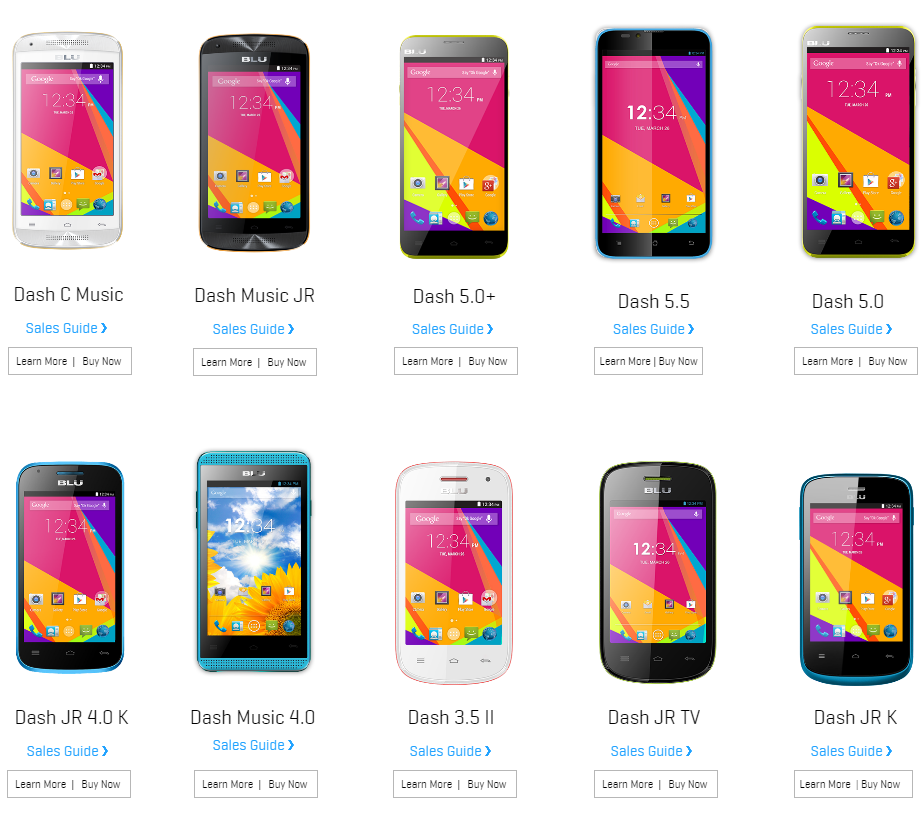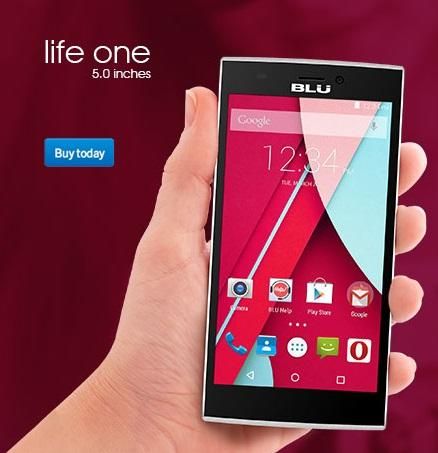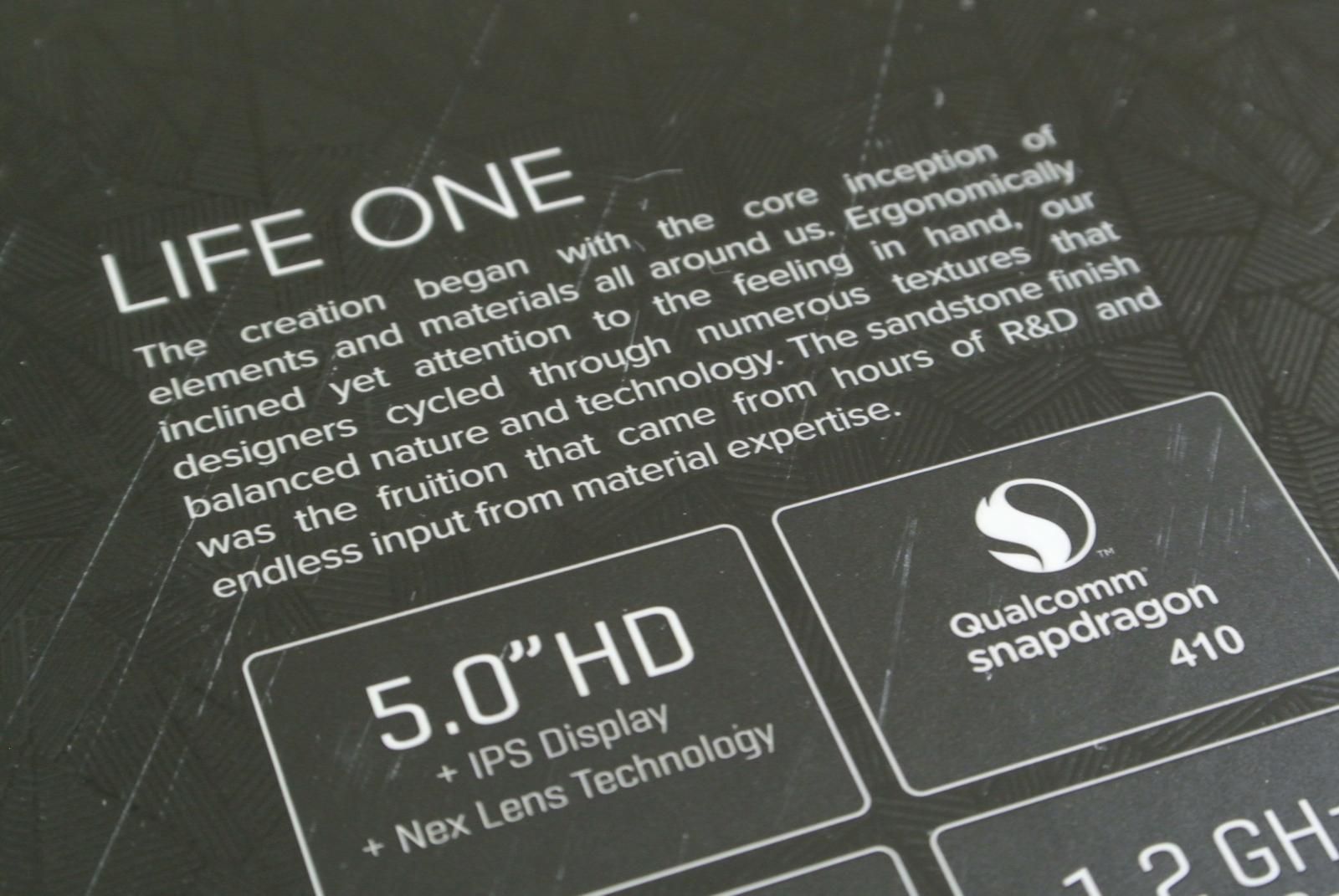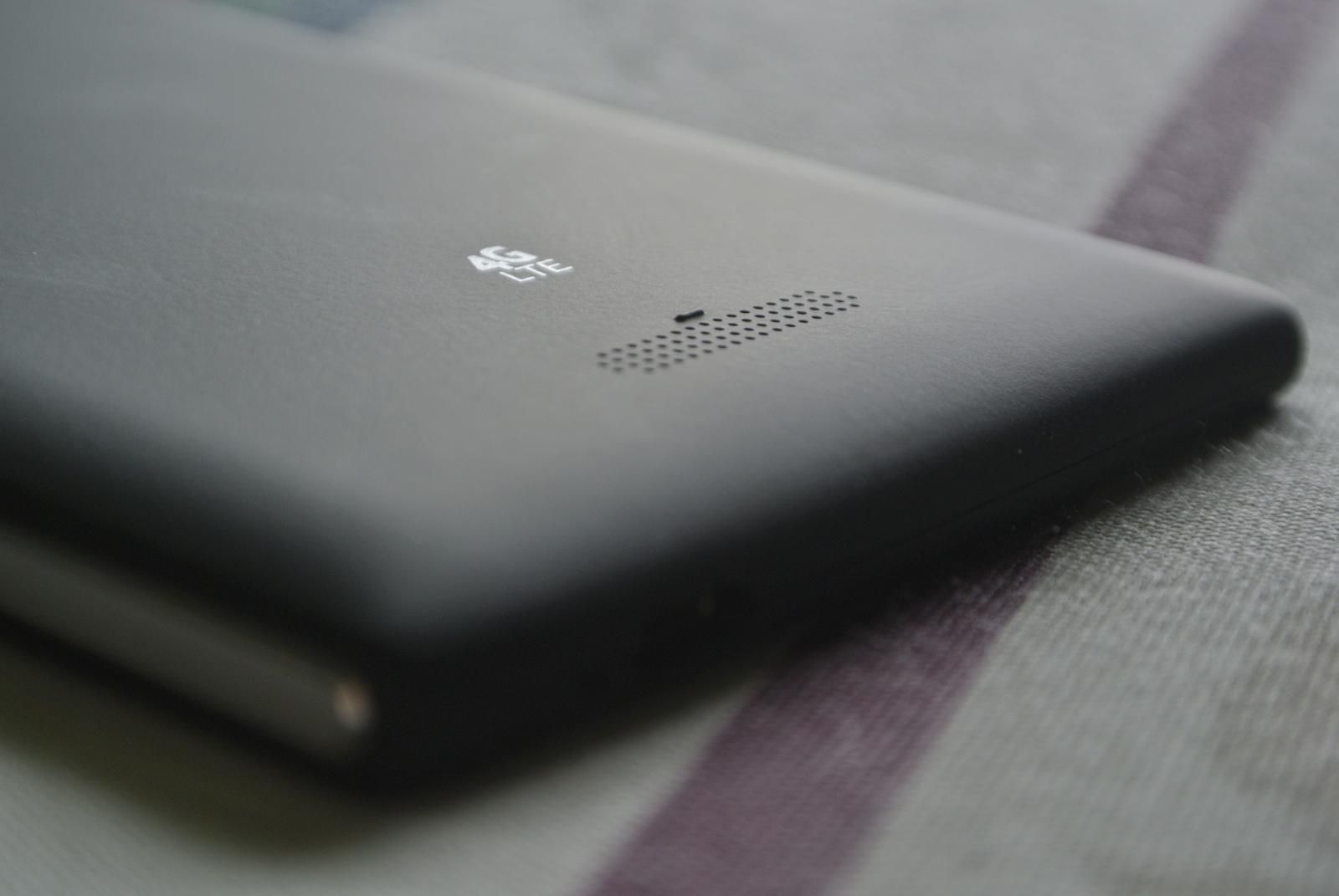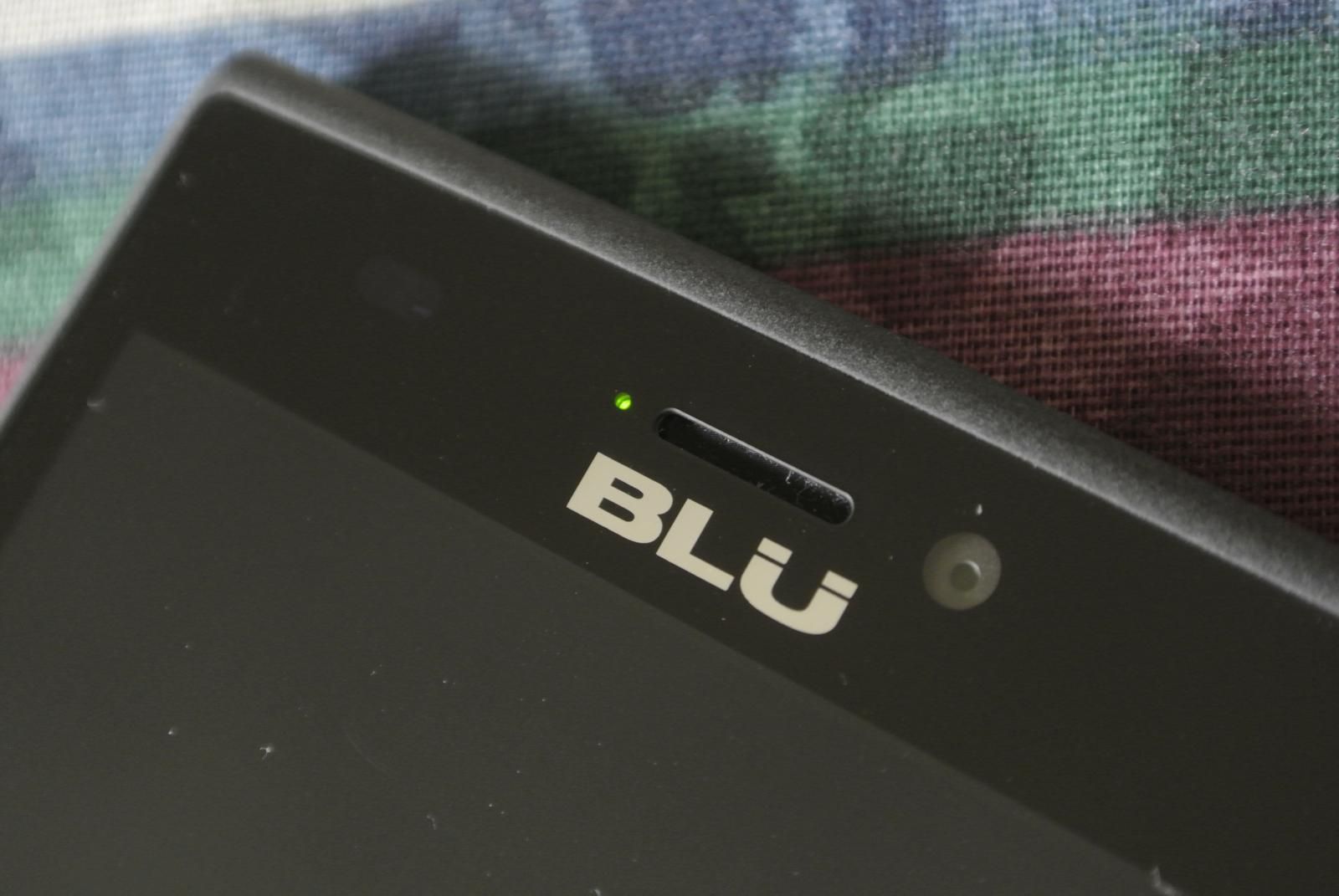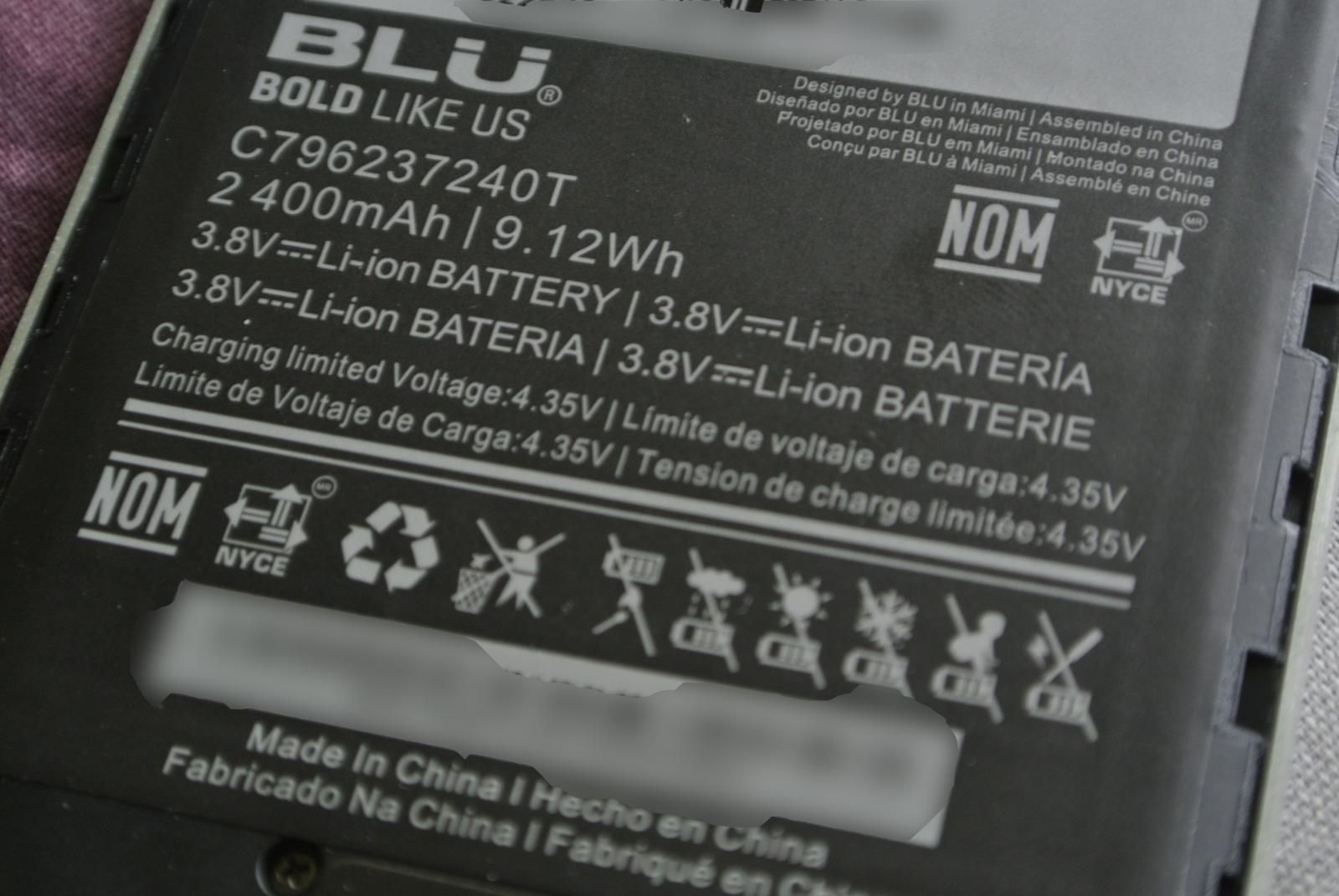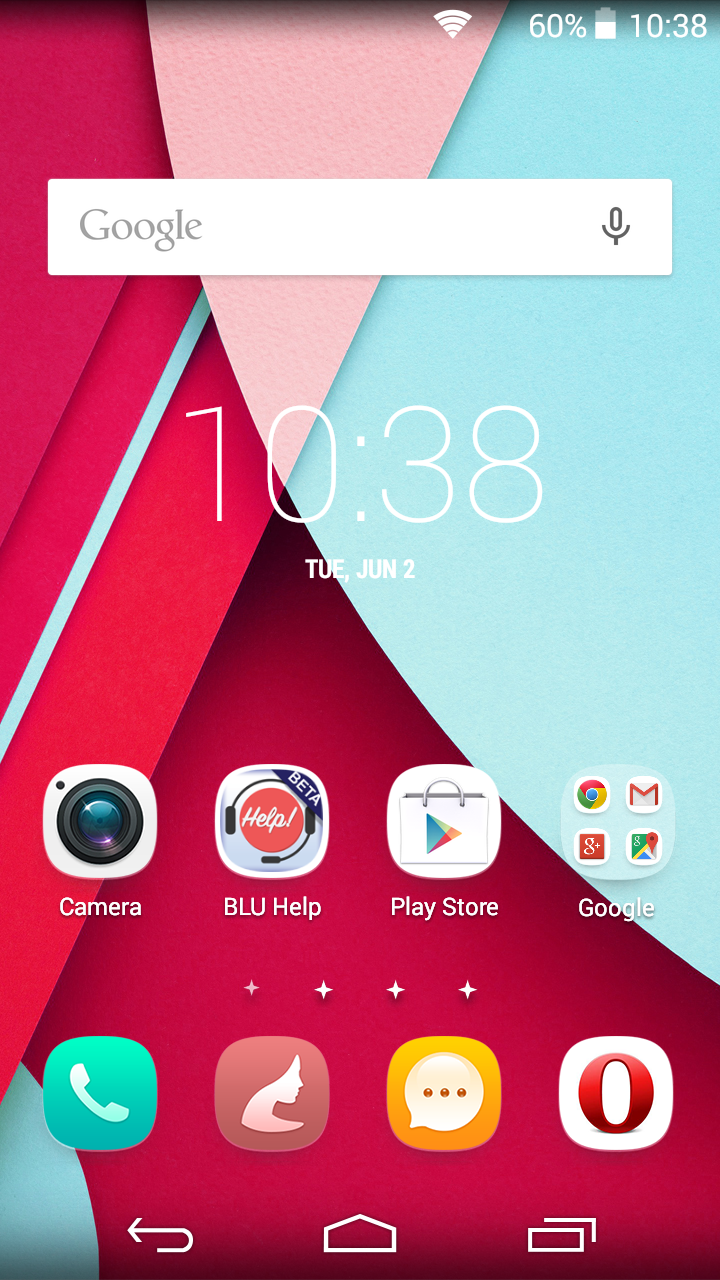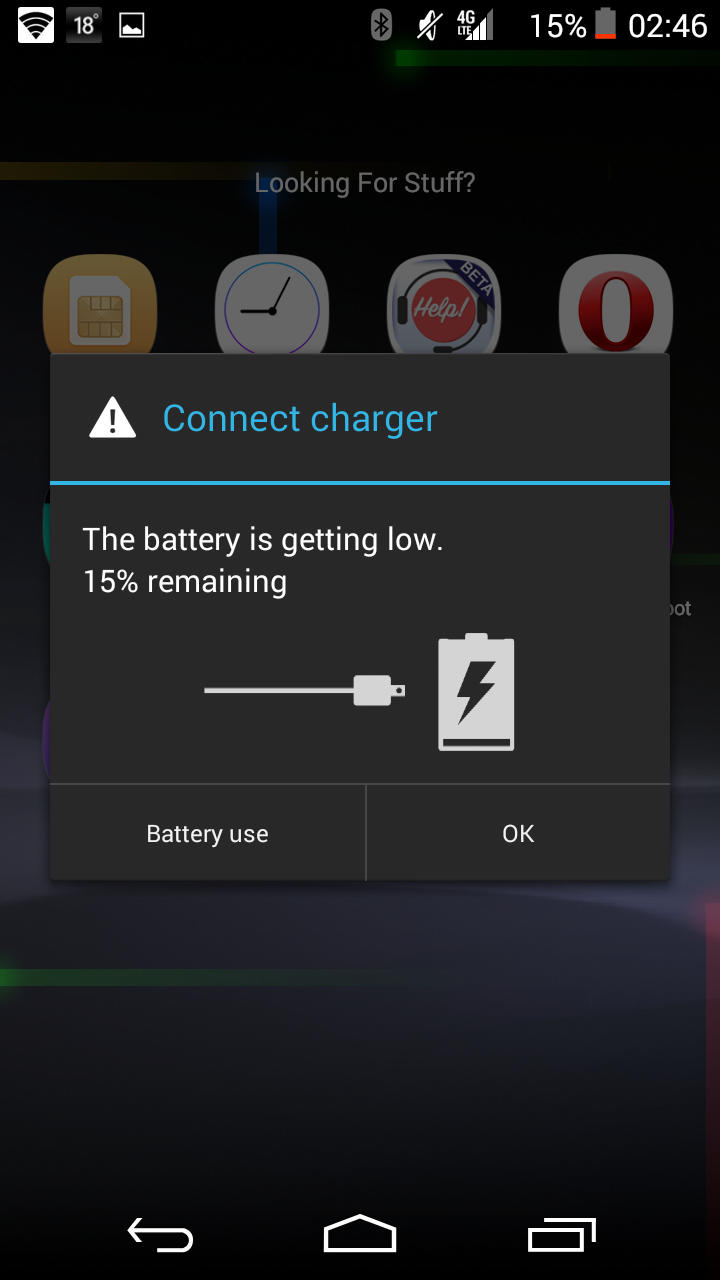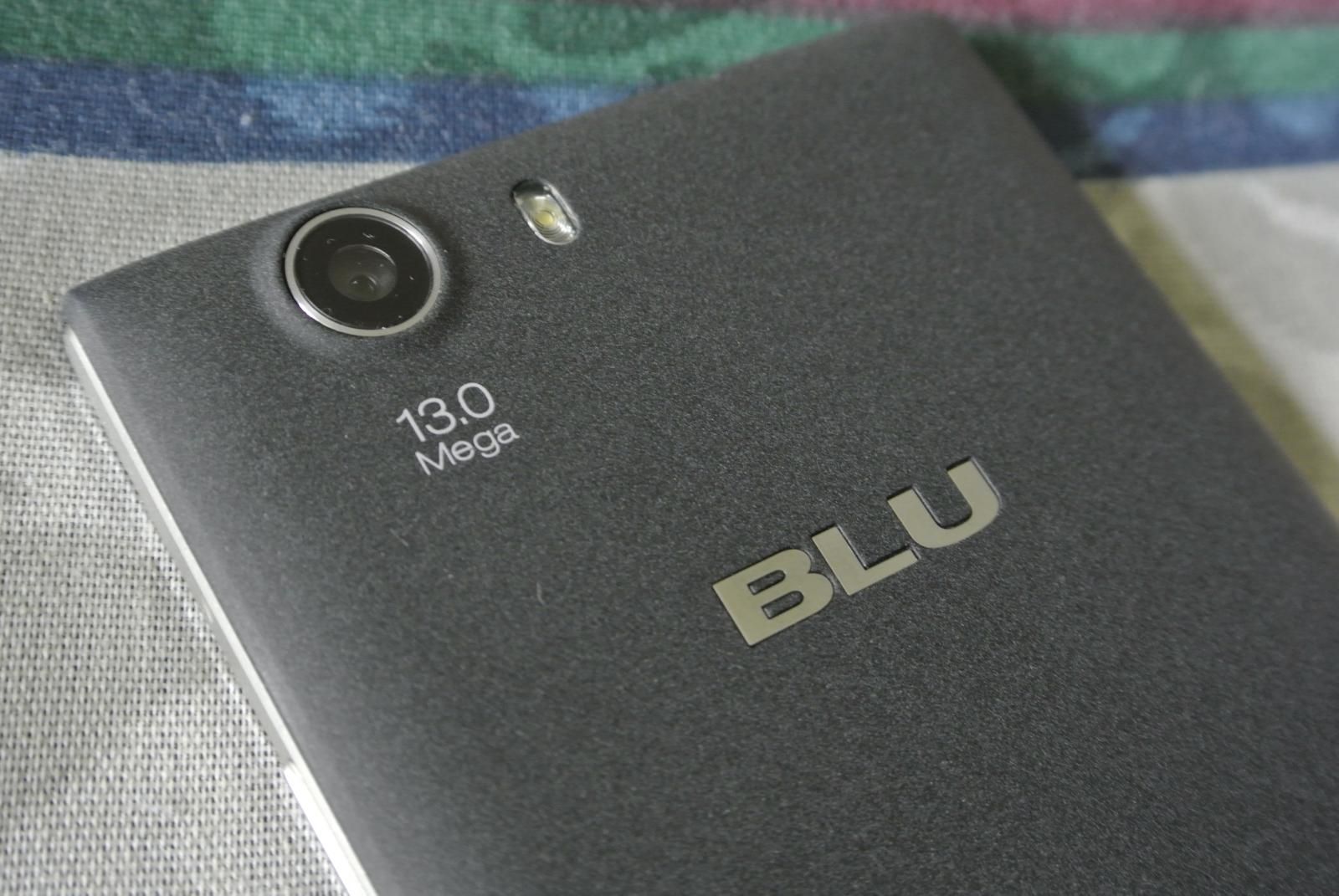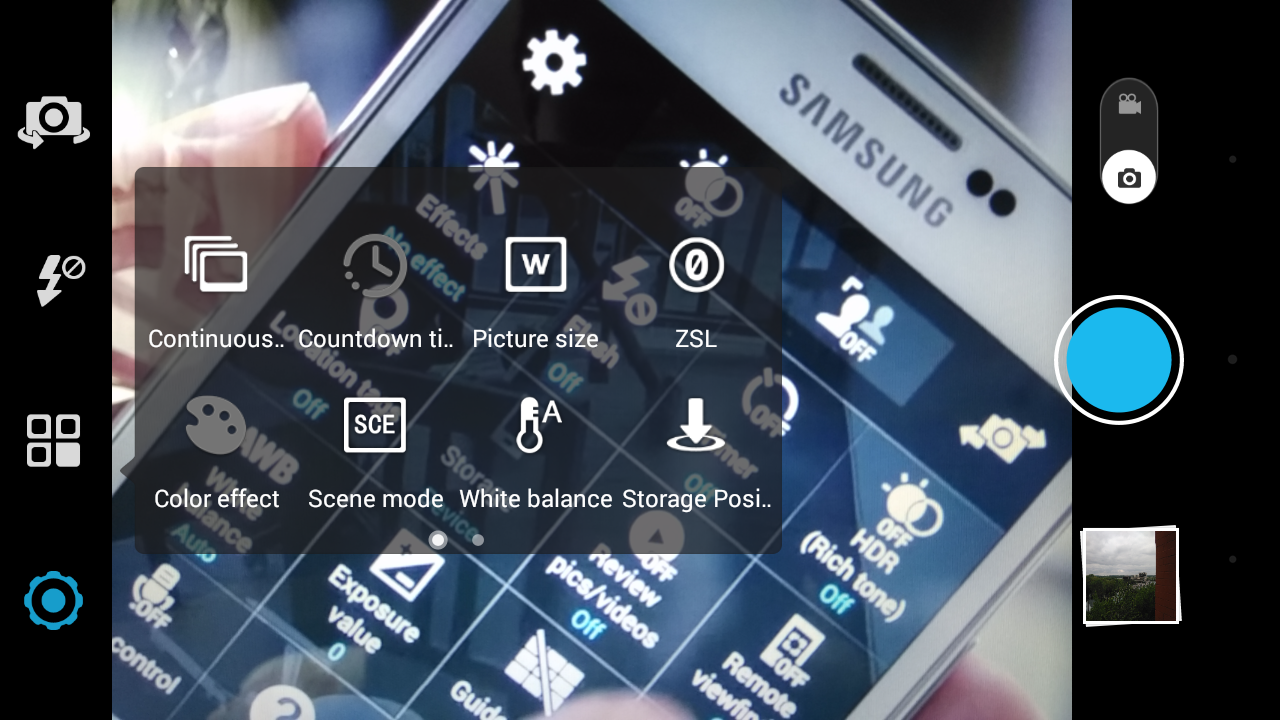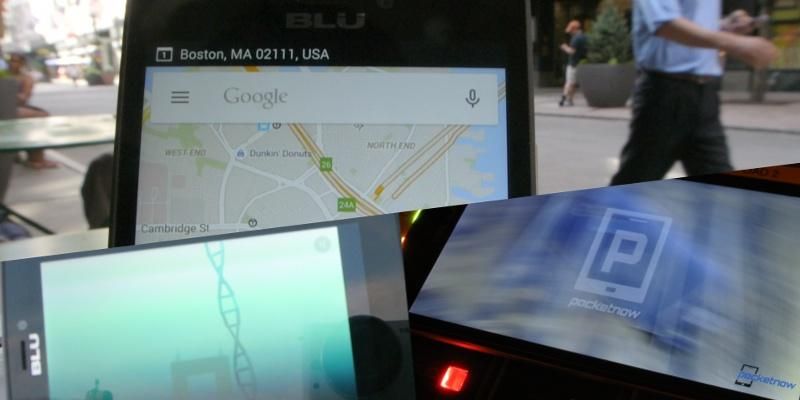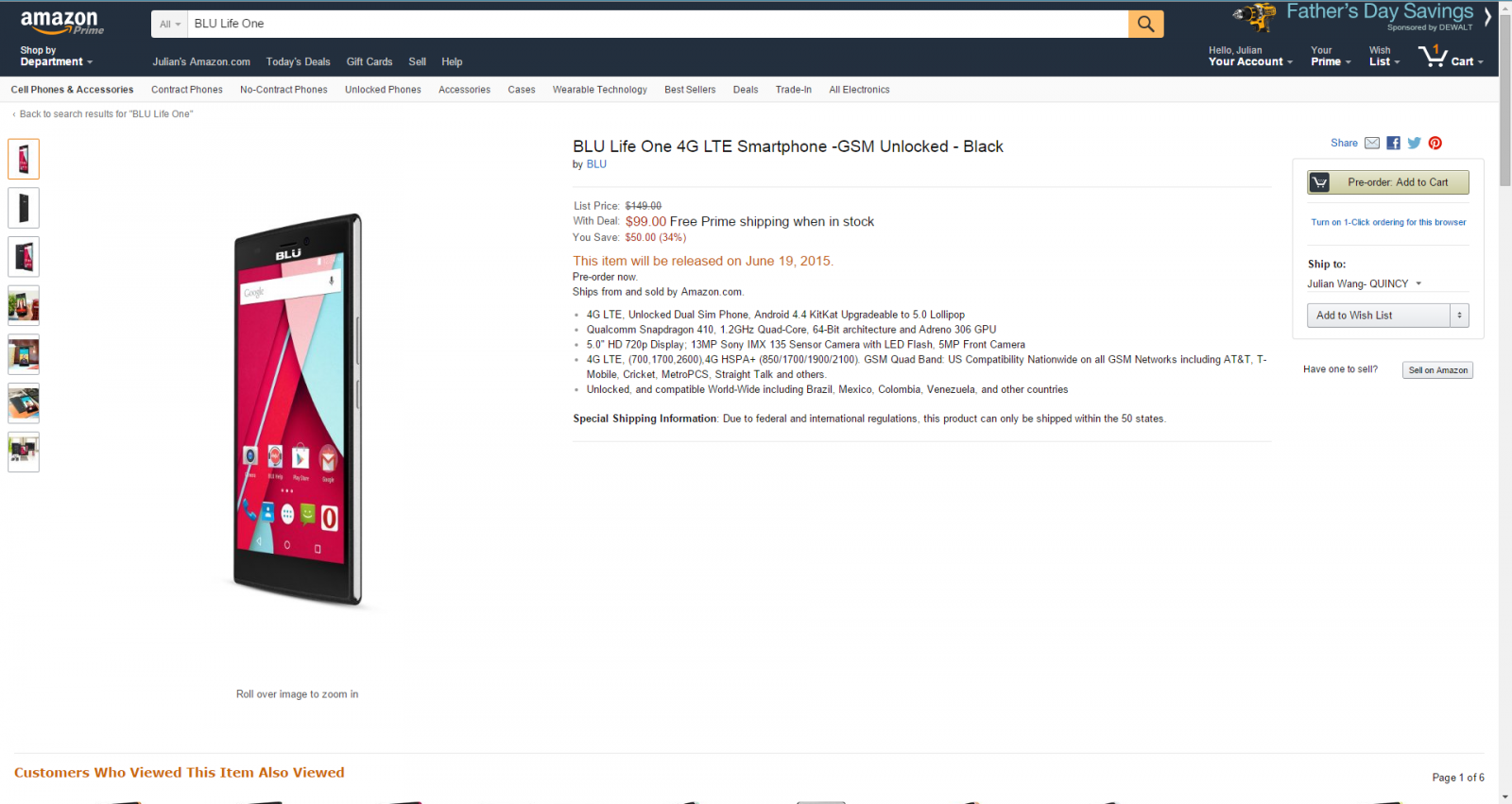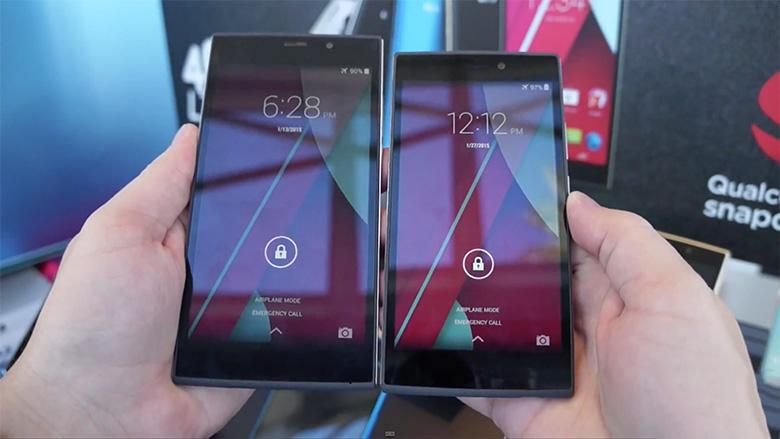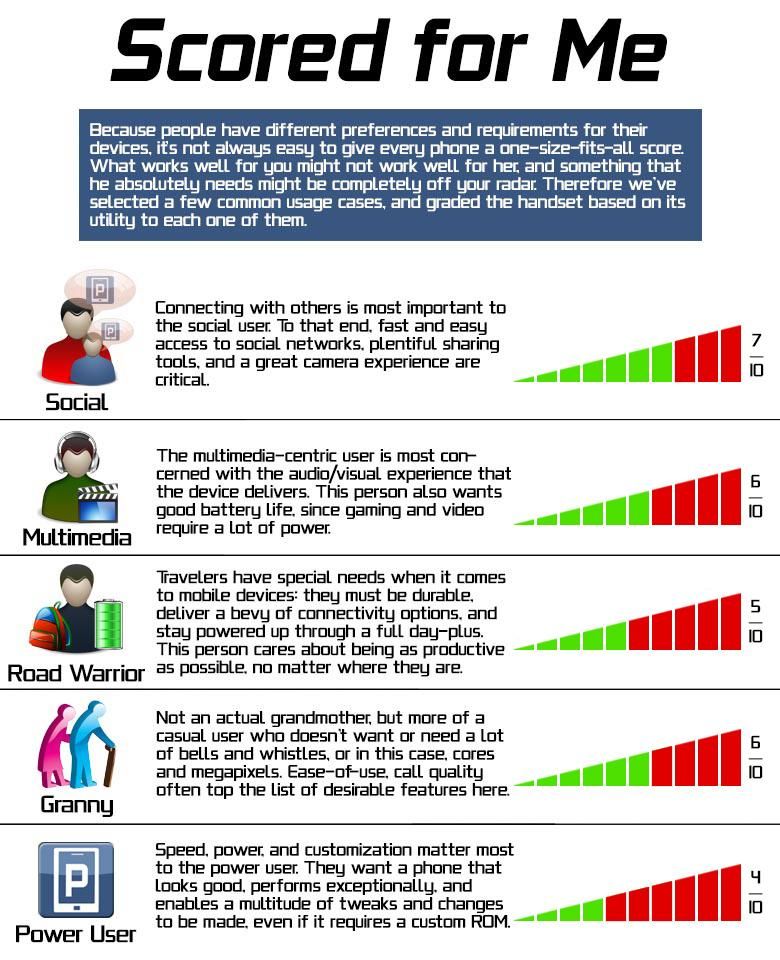Our title plays on the Miami-based company’s tagline, “Bold Like Us.” BLU is pretty bold for bursting onto the low-cost segment of the smartphone scene some six years ago. The company takes foreign-produced devices, rebadges them, and markets a standout spec for each one: this one’s the thinnest in North America, that one’s got the largest battery here …
… these ones fit into any size hand …
And this little piggy is our flagship.
On paper, the 2015 iteration of the BLU Life One brings LTE connectivity on reliable hardware at a competitive price point. But as with BLU’s philosophy of diversity, the phone’s software is all over the place. And it’s that discombobulation that might bring this smartphone down.
Specs & Hardware · Software · Camera · Overall UX
Pros/Cons · Pricing & Availability · Conclusion · Scored for Me
Specs & Hardware
The Life One comes in a box featuring some interesting literature that we’ll dig into shortly. Inside the box, we have a phone (duh), a linguine cable paired with a plug block, and some earbuds. Extra accessories include a screen protector and a custom-made case that feels as tacky as it looks and doesn’t provide much coverage for the compromise.
Let’s go over to the device and to the box for story time:
“The creation began with the core inception of elements and materials all around us. Ergonomically inclined yet attention to the feeling in hand, our designers cycled through numerous textures that balanced nature and technology. The sandstone finish was the fruition that came from hours of R&D and endless input from material expertise.”
OnePlus had its own go at a sandstone back cover for the One smartphone and the in-hand feel was stellar. BLU’s R&D team, given the price point, made their attempt using a special paint technique over gray soft-touch polycarbonate. While it’s nothing like sandstone, the texture does provide a pleasing softness, akin to felt. But if gray isn’t your style, you do have a choice of tan, blue, pink or white. Chromed BLU branding marks the top-third line of the back, while the speaker unit is down near the bottom. The camera is located on the top-left corner; to the right of the lens is a single-LED flash. BLU also has a penchant for calling out the sensor resolution right below the optics: “13.0 Mega” in this case.
Anodized aluminum side edges measuring 7.5mm thick help make the Life One feel like a champ. On the right rail, though, the minimal power trigger and volume rocker configuration could use more distinction.
The polycarbonate curls over the top and bottom edges to frame the front panel, made of Gorilla Glass 3. Beneath the glass lays an IPS display, measuring-in at five inches diagonally and bearing a 720p resolution. I’ve said it before, but I’ll say it here: 294ppi is perfectly fine for consumption six inches away. None of this “given the price” shtick. It is fine. Bright colors are balanced accurately; contrast is also portrayed accurately. On the other hand, blacks are a little inky. The display is sunken in a tad under the glass, so some reflections may limit your viewing angles. This time I will go with the “given the price” qualifier over here, and say that the phone punches well above its class.
The rest of the front side has BLU branding centered on the top bezel, the earpiece just above that, a notification LED to the grille’s left and a 5-megapixel selfie camera to the grille’s right.
All of this is packed into a form that’s 143.5mm tall and 72.1mm wide and weighs only 125g. Featherweight that might sound, though it actually feels natural on the Life One with its fit and finish.
Taking off the back cover, we see a 2,400mAh/9.12Wh non-removable battery. The Life One is dual-SIM capable, with the right slot taking a micro-SIM and the left slot accepting either a nano-SIM or microSD card of up to 64GB. This should give you pause if you do double dutch with carriers because there’s only 8GB of internal storage, with 4GB available for use. Circuitry-wise, the 64-bit Snapdragon 410 SoC from Qualcomm offers four cores clocked at 1.2GHz and an Adreno 306 GPU; you’ll also find 1GB of system RAM.
There are GSM, HSPA+ and LTE radios that are all compatible with AT&T and T-Mobile bands, as well as antennas for Wi-Fi 802.11 b/g/n, Bluetooth 4.0, GPS, and even FM radio.
From this point, I’ll tell you that the going price for this phone is $149.99 with a pre-sale discount disclosed further down in this review. Either way you go, this is as great of a hardware package as you can get in the market right now, based on raw capability. But at Pocketnow, we’re not just about raw capability.
Software
If you’re an eagle-eyed reader, then you have the eyes of an eagle. But you may have also noticed inconsistency in BLU’s skinning practices. The BLU Vivo Air’s home screens square-off apps while the BLU Studio Energy sticks close to stock KitKat.
I asked BLU’s marketing manager about why they put different UIs on different phones. Her response:
“On our higher end devices we tend to have different skins to differentiate them from our other phones in the lineup.”
I was not able to confirm whether or not BLU’s software skinning is done in-house, but while the Life One phones for sale will have a skin, the demo units from when we were at CES 2015 were running stock versions of Android. The phone runs on Android 4.4.4, with an update to 5.0 promised during the month of July. The home screen features iOS-themed rounded boxes for app badges in iOS-esque endless screens. The notifications and quick toggle shades remain bog standard KitKat.
The lock screen enables you to open up the device to the camera, Google Now, or to wherever you were before you locked your device. I would’ve said that this is also standard KitKat, except for the fact that the lock screen wallpaper is unchangeable: not through the multiple ways of changing your launcher’s wallpaper and not through the settings. It’s an odd oversight to say the least.
You don’t even have to look across different devices for the inconsistency. The Life One has its own email client, but not its own web browser; Opera comes pre-loaded instead. There’s also a little bloatware you can easily uninstall. But functions like “Portable [Wi-Fi] Hotspot,” which are accessible from the settings screen, cannot be removed from the apps page.
The custom-designed music app is the worst offender in all of this.
What is “Now Playing” cannot be directly accessed from the “List” screen that details what songs are coming up. Instead, you have to go through the “Library” screen, tap on the currently playing song and go through a “return to previous app” system animation in order to work with the “Now Playing” screen. The same roundabout applies when you want to move from “Library” to “List,” funnily enough.
An ever-present menu prompt in the navigation bar will hide different functions for different screens. If a hamburger button is to be placed anywhere, it should be next to the name of the screen so that users know there are different extra features for each screen. Or basically anywhere except the navigation bar.
The “Now Playing” layout itself places shuffle and repeat buttons on the top half of the screen, unlike most other music apps which place them closer to the play button. Not a crime, but it does play havoc with your muscle memory sometimes.
But one of the biggest concerns here (at least compared to the competition) is the lack of a battery-saving mode. The system warns you at 15% power to charge the phone. You can either dismiss the warning or access the battery screen from the settings to see what’s taking its toll on the Life One.
The gradients in aesthetic, usability, and feature quality can get very disconcerting if they come at you all at once. I lived with them, though, because it didn’t eat me alive.
Camera
So, “Here’s what the BLU Life One’s camera can do.” No, seriously, go look at what it can do. Or read on for a shorter take.
The Sony IMX135 sensor is two years old, has the capability of outputting a good image with the right tweaks, and apparently has gone down in price enough for BLU to feature it here.
Viewfinder software is a little tough to use. You enter into a settings panel and have to scroll over for exposure, sharpness and other adjustments. The “ZSL” you see there stands for “zero shutter lag.” I didn’t find much difference between shooting with the mode on and off. That may be because the shooting experience itself is pretty laggy.
In brightly lit scenarios, colors are close to those seen in reality, but lower-contrast situations in real life render out as even lower-contrast, muddy spots. Low light conditions bring out a bunch of noise, of course, but from what I can tell, the processing seems to favor saving details on the whole, so there we go. The HDR product is pretty decent, if you can wait the four seconds to get it.
1080p video is notably better than 720p, but that’s faint praise for the choppy footage. Definition and colors are okay, but overall, I wouldn’t use camcorder mode on the Life One unless I really had to.
In the end, all of this could really be worse at this price point.
Overall UX
The Snap 410 does its work well within apps, from games to productivity to video. Smash Hit works without a hitch with graphics set to medium quality. Using Google Maps is a little bit of a hassle, though: post-zoom map data has to take its time to reload with each pinch or pull. That’s on standard map mode, not terrain or satellite mode. Part of the blame goes to the small endowment of RAM.
The trouble precipitates when switching between apps or even just letting them run in the background. Several times during the review period, streaming audio services have cut out while reading web articles redirected from Facebook or Twitter. Podcast Republic in particular had trouble restarting podcasts once they got cut. Sometimes, pressing the home button locks the phone up for 7 or 8 seconds while the app screen redraws itself. It’s especially prone to doing that if you’re on a mobile network.
All of this goes in the face of Project Svelte, which focused on making Android run as smoothly as possible on as little as 512MB of RAM.
For most of our time on AT&T in metro Boston, we were plagued by network loading issues that kept LTE download speeds below 10Mbps. Tests in less-trafficked areas provided more favorable speeds, but light traffic around here can be hard to come by. That said, the antennas on this thing are pretty good at grabbing onto and staying on that LTE.
Test recipients said call quality was average with noticeable noise cancellation that kept my voice audible over loud music blaring in the background. The back-mounted speaker isn’t likely to impress, but it’s loud enough in quiet areas – not so in aforementioned loud music. The earbuds that come with the Life One render mushy, overpowering mid-tones, so if you do get the Life One, use them at your own risk.
We averaged above four-and-a-half hours screen-on time over the course 12 to 15 hours off the charger. If you want a blow-by-blow on how I personally used the Life One on a particular day, check out the first installment in our Driver of the Day series. Otherwise, it might be a good idea to keep a charger handy at work if your days run long.
Keeping in mind that this phone costs $30 less than the current-gen Moto G that does not have antennas for LTE, we think the balance of these experiences boils down to a net positive. But just barely.
Pros
+ Chic and sleek physique
+ Well-executed LTE, if you can get it
+ Brilliant display
+ Costs less than most of its competition
Cons
– Poorly manages multitasking
– Camera software sluggish
– Software design
Pricing and Availability
BLU is going directly to Amazon to sell the Life One for $149 with first shipments set for June 22. From June 11 through 19, the company is offering a pre-sale discount of $50.
Conclusion
There are increasingly amazing developments in the sub-$200 smartphone sector as we see advances in cheap component manufacturing and falling prices in older, but better-specced parts. BLU has been trying to flip tables down here for years by unleashing so-called “flagship” devices. The Life One has been the company’s masthead, leading a fleet of 60 other Android devices that are claimed on BLU’s website to be currently distributed. At CES, this year’s Life One and Life One XL debuted in an attempt to make a bold stance. It seemed like the release date was a bit too bold, though; these phones were supposed to be on the market “sometime in March,” not June.
BLU kids us not when it claims the Life One is competing with Motorola (the Moto G) and Samsung (with their just-as-relentless torrent of smartphones). It has fought most of the battle with costs, specs and fit & finish. In fact, the people behind BLU have probably fought many battles of which we have no idea, just to get these products to market.
But what I see on the BLU Life One is poorly optimized software. If something fails there, it drags down the rest of the device with it. I know that dominoes are popular in south Florida, but not like this. And from what I’ve seen, their whole lineup looks just as disorganized. After all, they introduced seven individual devices while in Las Vegas this year.
This review, however, comes before the software update to Lollipop. Regardless of the problems we’ve seen Android 5.0 bring to other phones, that upgrade might just work as a shuttle for any improvements to BLU’s own software game. Of course, we’re watching out for that. But from a wider perspective, at least BLU didn’t release the same phone in multiple sizes this year. The company has found new niches to tackle within its larger niche of affordability.
Sounds absurd? Sure it does. But bit by bit, they look like they might be finding a groove. It’s that promise I see in BLU that convinces me to hop along for the ride, whether or not it ends up going anywhere.
Scored for Me

